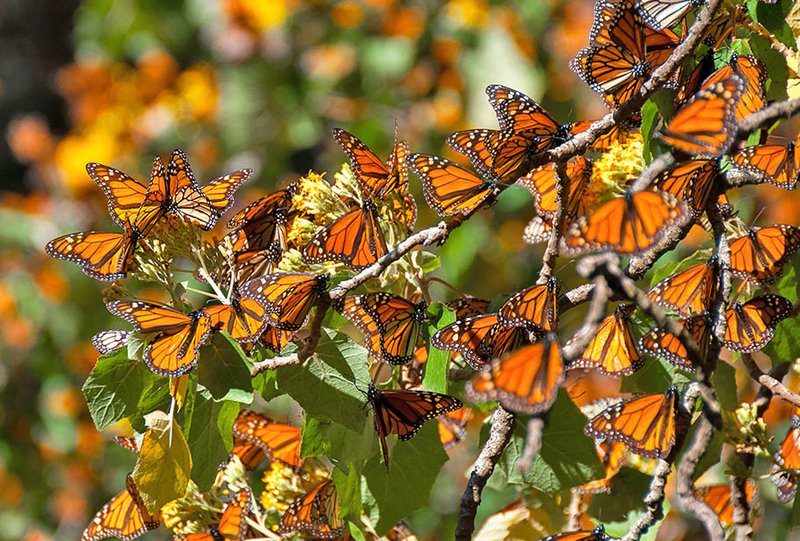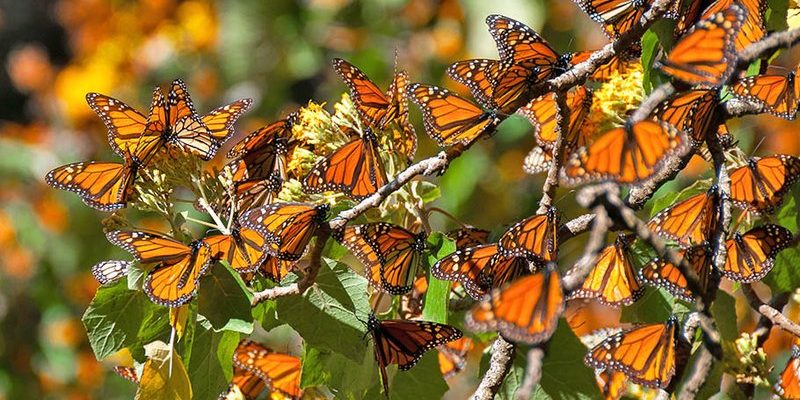
Imagine a Monarch butterfly as a small airplane that knows how to fly through different weather patterns. Just like pilots adjust their routes based on wind and storms, Monarchs adapt their lives based on the places they inhabit. They have some amazing tricks up their sleeves to not just survive but thrive! Let’s explore the places these beautiful butterflies live and how they manage to adapt to everything from frigid temperatures to bustling urban areas.
Understanding Monarch Butterfly Habitat
Monarch butterflies primarily inhabit areas across North America, Central America, and even parts of South America. Their habitats vary significantly depending on the season. During the warmer months, you’ll find them in meadows, gardens, and open fields filled with blooming flowers. These environments provide them with plenty of food in the form of nectar from various plants.
During migration, Monarchs change their scenery dramatically. In the late summer, many of them embark on a long journey to wintering sites in central Mexico. These sites are unique as they offer the perfect microclimate. High in the mountains of Michoacán, the cooler temperatures and humid conditions allow Monarchs to huddle together in large groups, conserving energy while protecting each other from the cold.
The specific plants that Monarchs rely on are the milkweed species. This plant is essential for their lifecycle, as Monarch caterpillars feed exclusively on it. Because of this relationship, their habitat choice is closely tied to the availability of milkweed. Without it, there wouldn’t be any Monarchs!
Monarch Migration: A Journey of Thousands of Miles
Every fall, Monarch butterflies embark on one of the longest migrations of any insect in the world. This journey can stretch up to 3,000 miles, with some traveling from the United States and Canada to their wintering grounds in Mexico. You might be wondering how these tiny creatures find their way over such great distances. The answer lies in their amazing navigational skills.
Monarchs use a combination of sun positioning, earth’s magnetic field, and landmark cues to guide them along their route. They also have an innate sense of timing, which tells them when to start their journey. It’s like they have a built-in GPS system! Along the way, they stop to refuel on nectar from flowers, so their journey is a mix of flight and frequent pit stops.
The migration isn’t just a feat of endurance; it’s also a survival strategy. By moving south, Monarchs escape the harsh winter conditions in northern climates. In Mexico, they gather in large clusters, which helps them stay warm and conserve energy during the colder months. Isn’t that a clever adaptation?
How Monarchs Adapt to Different Environments
Adapting to various environments is crucial for the survival of Monarch butterflies. One of the ways they do this is through their coloration. The bright orange and black wings serve as a warning to predators that they’re toxic. This helps protect them from birds and other threats, allowing them to thrive in different habitats.
Monarchs are also adept at changing their reproductive timing based on environmental factors. In warmer climates, they may reproduce earlier in the season, taking advantage of the abundance of food sources. On the flip side, in colder regions, they might delay reproduction until conditions are right. This flexibility ensures that they can optimize their chances of survival, no matter where they find themselves.
Additionally, Monarchs have developed a unique relationship with milkweed plants. Not only do these plants provide food, but they also act as a defense mechanism. When caterpillars consume milkweed, they absorb toxic compounds, which makes them unappetizing to potential predators. This adaptation allows them to flourish where milkweed is abundant, creating a specific niche that protects them.
The Importance of Milkweed in Monarch Habitats
Milkweed is more than just a plant for Monarch butterflies; it’s vital for their lifecycle. The female Monarch lays her eggs exclusively on milkweed plants so that when the caterpillars hatch, they have an immediate food source. Without milkweed, the Monarch population would struggle to survive.
Unfortunately, milkweed is disappearing from many areas due to urban development and agricultural practices. This loss poses a serious threat to Monarch populations. Conservation efforts are underway in many communities to plant more milkweed and restore natural habitats. Simple actions, like planting milkweed in your own garden, can make a significant difference in supporting these beautiful butterflies.
When you think about it, by preserving habitats filled with milkweed, we’re not just helping Monarchs; we’re also protecting the entire ecosystem. Monarchs play a role in pollination, just like bees, and their presence indicates a healthy environment. It’s a win-win situation!
Climate Change and Its Effect on Monarchs
Climate change poses significant challenges for Monarch butterflies, impacting their migration patterns, breeding cycles, and overall survival. As temperatures fluctuate and weather patterns change, Monarchs may find their traditional migration paths disrupted. This means some Monarchs might arrive at their wintering sites too early or too late, which can affect their survival rates.
Additionally, extreme weather events—like storms and droughts—can wipe out entire populations. These shifts in climate also affect the growth of milkweed and nectar plants, further complicating Monarchs’ access to food. It’s a harsh reality, but it’s crucial for us to recognize how interconnected these issues are.
Conservation efforts that focus on protecting habitats and planting native flora can help mitigate some of these effects. Creating butterfly gardens and supporting local agricultural practices that favor wildlife can make a tangible difference for Monarchs facing the pressures of climate change.
Why Monarch Butterflies Matter
You might be wondering, “Why should I care about Monarch butterflies?” Well, beyond their beauty and fascinating life cycle, Monarchs serve as important indicators of environmental health. As pollinators, they contribute to the ecosystem by facilitating plant reproduction. Their presence signifies a balanced and healthy habitat.
Moreover, Monarchs inspire countless people around the world. Their incredible migratory journey captures the imagination and encourages conservation efforts. By protecting Monarch habitats, we’re also nurturing a broader environment that supports many other species.
Supporting Monarch butterflies means supporting biodiversity. As they face threats like habitat loss and climate change, every effort counts. So whether you plant a few milkweed seeds, create awareness, or support conservation organizations, know that your actions can have a positive impact.
Monarch butterflies are not just beautiful creatures; they’re a testament to nature’s resilience and adaptability. From their remarkable migration journey to their reliance on milkweed, these butterflies showcase an incredible ability to navigate various environments. As we face growing challenges such as climate change and habitat loss, it’s more important than ever to recognize the roles these magnificent insects play in our ecosystems.
By understanding where Monarch butterflies live and how they adapt, we can take steps to support their survival. Whether it’s through planting milkweed, advocating for conservation, or simply appreciating their beauty, we can all contribute to ensuring that future generations get to experience the wonder of Monarch butterflies. Together, let’s be the guardians of their journey!

